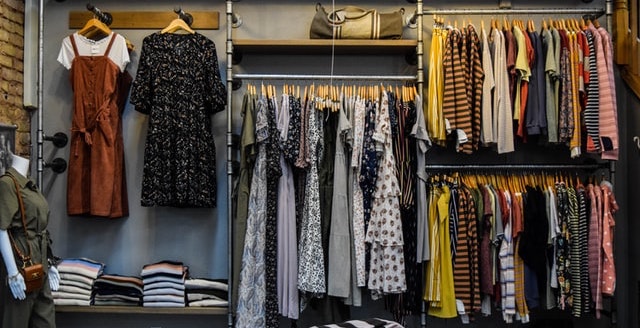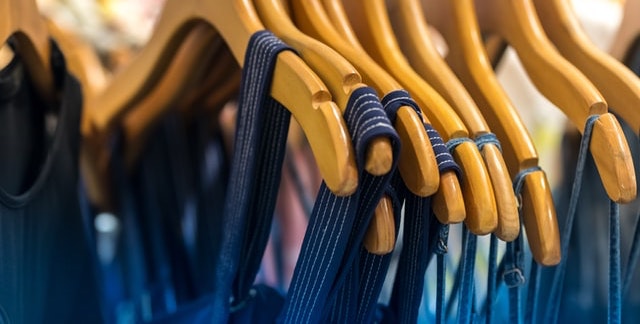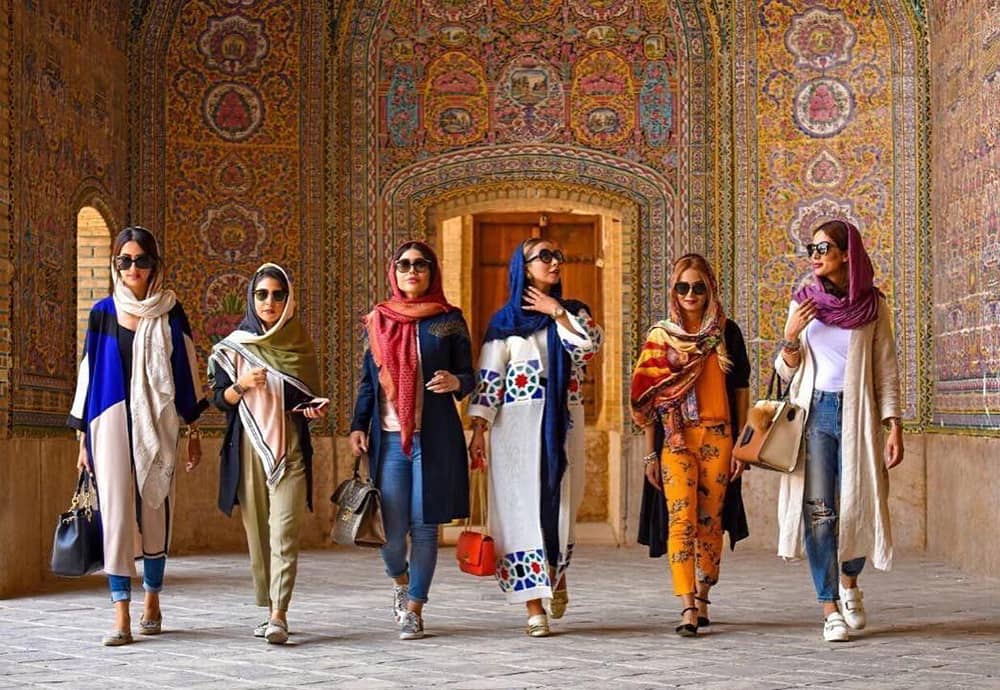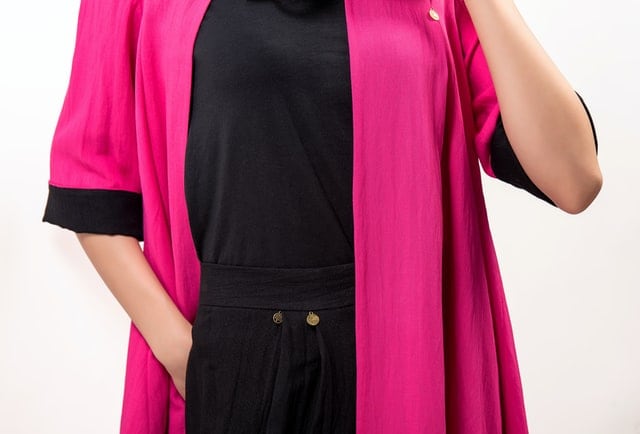Middle East fashion is an important industry, perhaps even more than in the West. Clothes reveal so many things about not only the personality but also the region and social class of the wearer.
Moreover, the choice of a certain item of clothing assumes a fundamental moral value. For example, some Arabs more or less consciously think that women without hijabs are more open-minded, but also have fewer morals, while women with hijab are somewhat more religious and thus respectable.
Thus, clothes in the Middle East fashion are a statement, just like they are in the West, but it has a stronger social and moral dimension, too.
As we have seen there is an infinite variety of Arab garments and what we have listed represents only a minimum part of it. Clothes remain a fundamental element in the cultural identity of each country in the Middle East. Some countries have followed Western footsteps in terms of fashion, namely the Levant and North Africa, while others are still holding on tight to their traditional attires like Saudi Arabia or Yemen.
Also, unfortunately, Government in some countries like Iran and Saudi Arabia push the people to dress as the government like and the people especially girls and women are under pressure beacause they were forced to wear hijab and they have no freedom in choosing fashion. in these kinds of countries, we can not understand the real people clothing habits in society and the Middle East fashion. because the government dictate the lifestyle and Islamic rules and people have to obey it otherwise go to jail or fine.
Middle East fashion Market
The Middle East fashion industry reached 55 billion dollars in the MENA region. The annual spending for fashion per person is $500 in Saudi Arabia (double of China) and $1,600 in the UAE (double in the US), this is among the highest in the world. The GCC market presents significant opportunities amid a pessimistic global outlook for the industry. The Middle East Fashion still has potential, despite an already well-established fashion market.
While the Gulf countries are far smaller than China in terms of population size, the propensity of its shoppers to spend big is what gives the region an outsized role among international markets. Shoppers in the region have developed a taste for both modest fashion and homegrown labels that reflect their culture.
Type of clothing in Middle East Fashion
While clothing might seem a superficial matter in Europe and America, this really is not the case in the Middle East fashion sector. Clothes can give us precious info about the person in front of us while we are doing business or making friends and it is a useful key to understand the spirit of each Arab nation.
Thawb— loose, long-sleeved, ankle-length garments like men wear. However, for women, the neck and front can be embroidered and decorated with beads. Salwar — cotton or silk pants worn under the thawb. Abaya— a large, black cloak worn over the thawb either loose and flowing or wrapped around the body.
Distinct types of women’s clothing in the Middle East
There are two distinct types of women’s clothing in the region: one for locals and one for expatriates. Outside the home, most Arab women dress according to religious custom, which means that they must cover most of the body, from head to foot. The traditional black overgarment (abaya) is ankle length with long sleeves and a high neckline, and the hair is covered.
Some Arab women are totally covered, including their face and hands, especially Saudis and those with strictly religious husbands. This is meant to protect women protection from unwanted attention, and in Saudi Arabia, even foreign women must wear an abaya outside the home; the religious police will stop any woman who has her head uncovered and ask her to cover her hair immediately. In other UAE states, foreign women may wear western clothes but should always dress conservatively.

Middle East fashion informal but smart
The region’s hot climate and customs call for informal but smart dressing. Arabs frown on clothes that reveal the shoulders, arms and legs, and any woman dressing provocatively will be regarded as being of ‘easy virtue’ or perhaps even as a prostitute. In the home, however, when not entertaining close friends or relatives, Arab women often adopt the western dress, particularly younger women, and there are no restrictions on the way foreign women may dress in private.
Beachwear is another thing to consider. While wearing bikinis or swimsuits is not frowned upon, stay away from topless sunbathing and avoid thong-like bottoms.
For men, speedos are actually acceptable by the pool or beach, but more conservative swimwear is recommended. Although you will mostly see tourists around, many of them come from the rest of the Emirates and are more conservative. Be respectful.
In a business setting, it is appropriate for women to wear conservative suits, in the form of dark-colored trousers or skirts that fall below the knee. The Elbows should also be covered at all times with a shirt or vest.
Arab men wear the thobe, a loose, ankle-length robe made from fine white cotton (or heavier woolen material in winter). There are different styles of thobe, both in the cut of the cloth and in the fastenings at the neck and front. Perhaps the most distinctive are those worn by the Omanis, which sport a tassel. The thobe can be worn for all occasions, either social or business. An outer cloak, the bisht, is worn on formal occasions and can be very costly, with border embroidery in gold thread and the material itself of the finest quality.
The traditional, distinctive head covering is the guthra, a white or red and white checkered cloth held in place by the agal, a black ‘rope’ which was originally a camel tether. There are different types of agal: for example, Qataris normally wear a more African-style headdress, with two long ‘tails’ reaching down the back. Arab men sometimes wear casual dress on very informal occasions or at the beach, but Saudi men are strongly encouraged to wear a national dress at all times.
Obviously, foreign men aren’t expected to wear Arab garments, and western dress is the norm. Men should avoid wearing shorts and sleeveless shirts in the street, as is these are regarded as excessively casual, although with the development of tourism, this attitude is softening. However, suits are rarely worn in the Gulf, except for important business meetings and related social events. Standard wear in the office is a shirt (usually long-sleeved), tie, and lightweight trousers.

MIDDLE EASTERN CLOTHING CULTURE:
middle east fashion and textile sector has a very high diversity in terms of design, color and quality.
Clothing Men: Must be covered from knees to waist in Islamic nations. Most wear turbans or head-covers for both religious purposes and to cover head from extreme heat.
Many women are not required to wear head-coverings but choose to do so for modesty. In some Islamic countries, women are expected to be covered fully with exception of hands and face. Stricter nations require everything to be covered rational is so women are not viewed in a sexual manner
Types of Veil:
Hijab– head-covering used as a symbol of womanhood and modesty.
Khimar– long cape-like veil covers hair, neck, and shoulders
Chador– full-body cloak worn in Iran
Niqab– veil attached to the headcover. Covers all but eyes.
Burqa– covers entire face and body with mesh screen to see
The word hijab comes from Arabic for veil and is used to describe the headscarves worn by Muslim women. These scarves, regarded by many Muslims as a symbol of both religion and womanhood, come in a myriad of styles and colors.
The type most commonly worn in the West is a square scarf that covers the head and neck but leaves the face clear. The khimar is a long, cape-like veil that hangs down to just above the waist.
It covers the hair, neck, and shoulders completely, but leaves the face clear. The chador, worn by Iranian women when outside the house, is a full-body cloak. It is often accompanied by a smaller headscarf underneath.
The niqab is a veil for the face that leaves the area around the eyes clear. However, this may be obscured by a separate eye veil. It is worn with an accompanying headscarf, such as a khimar. The burqa is the most concealing of all Islamic veils. It covers the entire face and body, leaving just a mesh screen to see through.
E-commerce and Middle East Fashion Sector
Middle Eastern consumers are also becoming increasingly connected. Internet penetration in the UAE and Saudi Arabia is at 99 and 89 percent respectively, compared to just 57 percent in China. E-commerce, therefore, is fast becoming table stakes in the region. It is set to grow at around 40 percent a year over the next five years, increasing its penetration to 9 percent from the current 2 percent; in some fashion categories in Saudi Arabia, it is already at 20 percent.
Internet platforms are thriving, and international digital players including Amazon, Farfetch, Jollychic, and Yoox Net-a-Porter are wooing local consumers. Local players, including both omnichannel and pure players such as Ounass, The Modist, and Namshi, have sprung up to capitalize on this trend.
Clothing in Iran
Perhaps the most visible mark of Iran’s Islamic leanings is the conservative dress expected of its citizens. Although normal, Western-style clothing is acceptable in private homes, when in public women are required to cover everything but their face, hands and feet.
The most common uniform consists of a headscarf (roo-sari, روسری) to conceal the head and neck, a formless, knee-length coat known as a roo-poosh (روپوش) and a long dress or pair of pants. In and around holy sites, you will be expected to dress even more modestly in a chādor, a full-length swathe of black cloth designed to cloak everything but your face from view.
The dress code can be daunting during your preparation, but roo-saris, roo-pooshes and chādors can be bought cheaply in Iran. Watch or ask friendly Iranian women for guidance and marvel at how young women are pushing the boundaries of modesty with colourful headscarves that cover only a fraction of their hair and figure-hugging roo-pooshes that reveal every curve of their bodies.

Men have a slightly easier time of things. Short-sleeved shirts and t-shirts are acceptable for daily wear. Shorts and three-quarter length pants are only acceptable on the beach.
According to the dress code in Iran for tourists, you are supposed to hide your body shape, so you should wear trousers – either jeans or if visiting in summer, something loose and cotton is best. Your top should be fairly baggy and fall to about mid-thigh. A summer dress over jeans and a t-shirt is a good option.
Fashion in UAE
UAE has an important role in the Middle east fashion sector. According to a report by Thomson Reuters, the fashion sector of Islamic clothing in the UAE alone is expected to be worth $484 billion by 2019.
Modest apparel has seen a growing niche market of clothing such as the abaya and jilbab that have also been featured on catwalks at Dubai’s Fashion Week, Fashion Forward, and other events from around the world.
Also read: Fashion Industry in Lebanon
Modest Middle East fashion was specifically designed to help Muslim women in dressing in accordance to their faith whilst still expressing their preferences in style.
Future of Middle East fashion
The influence of Western and American culture on the way of dressing in the Middle East and Africa will be increasing for the years ahead But at the same time, it seems that the Middle Eastern and African countries will retain their original and deep-rooted clothing culture.
On the other hand, in the coming years, the interaction between the Middle East fashion designers and American and European brands will definitely grow a lot and this is an opportunity to get acquainted with Western culture with the traditional costumes and clothing culture of the Middle Eastern and African people.




















